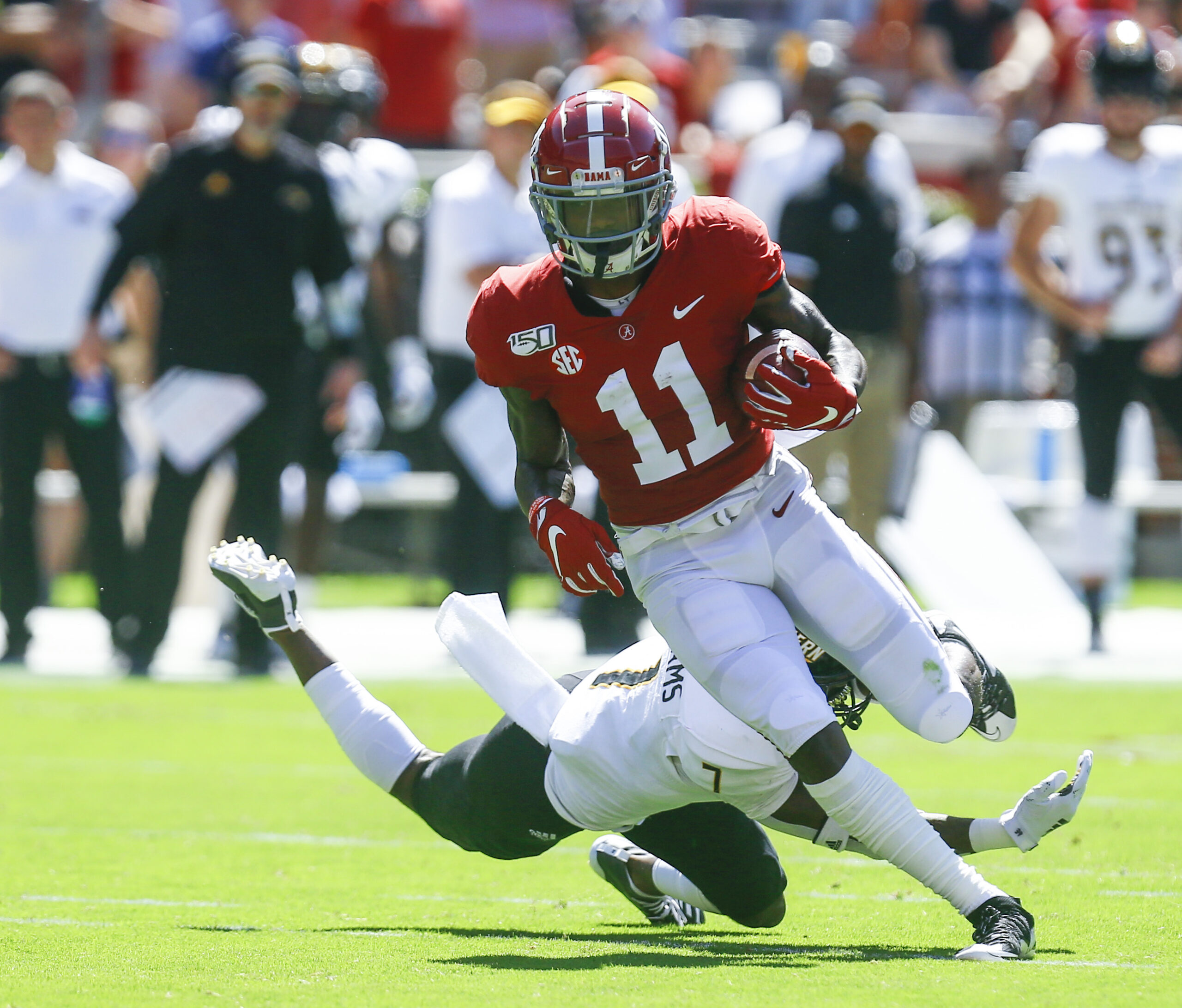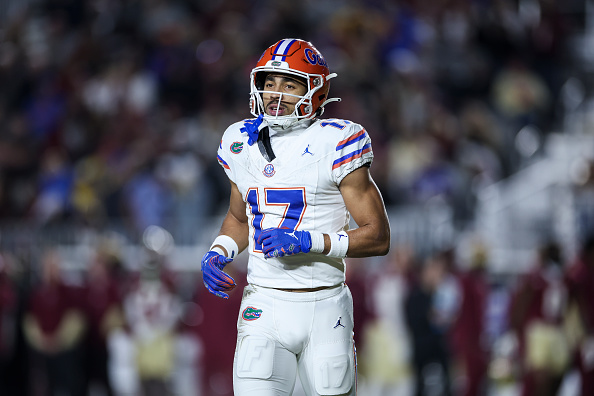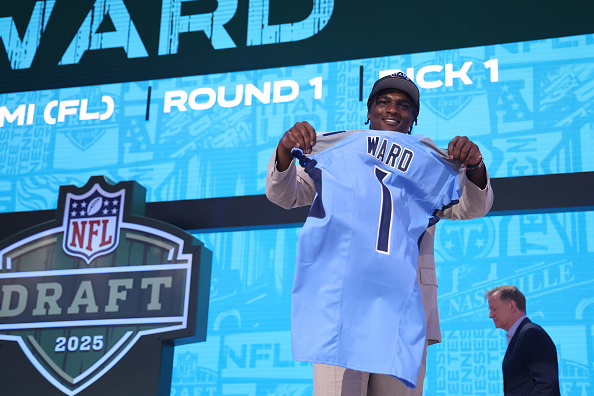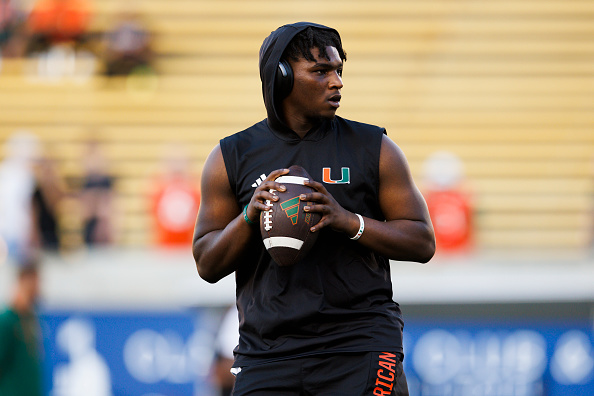After Friday’s first-round player evaluation, I decided to simulate through an entire NFL 2020 Draft to see how it would feel. The draft picks did not include the three additional compensatory picks the Broncos will be awarded for Billy Turner, Max Garcia, and Tramaine Brock leaving in free agency (likely a fifth-rounder and two seventh-rounders). With those three additional picks, I might have selected a punter, additional linebacker, and additional defensive lineman.
In the first round, the selection was between A.J. Epenesa, Javon Kinlaw, and Henry Ruggs III. Ruggs’s selection adds speed, versatility, and reliability to an offense that’s trying to put together a unit that will compete with the Kansas City Chiefs in 2020. With Courtland Sutton already a Pro Bowler coming off his breakout 1,000-yard season (receiving passes from three quarterbacks), Ruggs will open up the middle of the field and pose a huge over-the-top threat.
Second round is where I felt a little bit stressed as there were two talented corners at the top of the big board, but I opted to go with the taller, younger Terrell who was more comfortable in a Cover 2 defensive scheme. Terrell was a starting cornerback for the National Championship-losing Clemson Tigers, he stems from a great program, and would surely fill in the event that Chris Harris, Jr. departs Denver.
In the third round, shoring up the offensive line was an absolute must. The best way to do that? Draft Matthew Peart with the 77th pick. He was a team captain, he’s gigantic at 6-foot-7 and 310 pounds, and he’s played both offensive guard and most recently transitioned to offensive tackle. He’s versatile, big, a leader, and fills a position of need while being the best player available.
To further address the offensive line in the third round, since both Ron Leary and Connor McGovern will be leaving in free agency, center Tyler Biadasz from Wisconsin is the selection. Six picks later, I was able to draft another dependable, high ceiling offensive lineman that back-fills a departure with quality talent and possible Day 1 starter.
Sticking to the best player available strategy and again being able to fill a position of need, Clyde Edwards-Helaire, the running back for the National Champion LSU Tigers, is the last pick of the third round. Devontae Booker is likely gone from Denver, thus leaving an RB3 hole that can be filled here. Edwards-Helaire is a down-field thumper of a back that has a punishing running style while also possessing sweet feet for smooth runs and crisp jump cuts. He could come to Denver and push Royce Freeman for RB2 reps considering his running style is more complementary to Phillip Lindsay.
In the fourth round, I was able to find yet another team captain in Markus Bailey for the Purdue Boilermakers, a starting middle linebacker with great football IQ, good tackling ability, and good football instincts. Bailey showed that he is competent in pass coverage in terms of route combinations and zone coverage, but his lateral movement and overall speed don’t necessarily appear to be built for man coverage. This kind of player would allow the Broncos to possibly consider not picking up Todd Davis’s $5 million option, allowing Josey Jewell and Alexander Johnson to start with Bailey providing depth.
With the first pick in the fifth round, there was a diamond in the rough with Nick Coe, a 6-foot-5, 291-pound edge rusher that also played significant defensive tackle reps. He’s disruptive, strong, big, and comes from the SEC where he faced elite offensive line talent. He could be groomed to slide into one of the holes left by Adam Gotsis, Shelby Harris, or Derek Wolfe.
With Will Parks likely leaving in free agency, the Broncos will have a hole at backup safety which is quite an important role as they substitute in and out of different packages, utilizing different defensive back combinations. Terrell Burgess could have an impact on special teams, and with proper coaching and player development could become that backup safety. Terrell is a downfield safety that excels in coverage of tight ends or backs out of the backfield.
With the 214th pick in the seventh round, interior defensive lineman Robert Windsor from Penn State was there as a 6-foot-5, 290-pound big-man that could also become a rotational defensive line player. He seemed like a great fit from a big school that boasted a talented 2019 defense. Windsor as a seventh-round selection wouldn’t be expected to come in right away and contribute, but size and strength cannot be taught, so selecting a player late with his physical tools was fitting.







